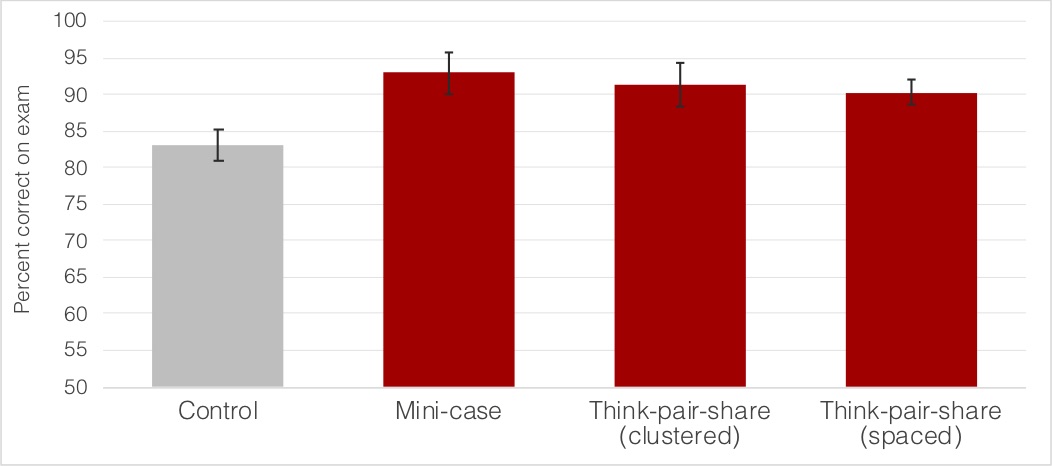Are All Active Learning Strategies Equally Effective?
Outcomes did not differ significantly between think-pair-share exercises (clustered or spaced) and mini-case study discussions, but students consistently learned more from active learning than lecture alone. |
Principles of Finance
Pastor teaches several sections of a graduate-level finance course that focuses on helping students apply conceptual and quantitative techniques to analyze a company’s financial health and develop a compelling business case. Approximately 30 to 40 students enroll in each of the course’s three sections. Traditionally, the course is lecture-based, and Pastor assesses learning and exams and written assignments. As she integrated active learning into lectures, Pastor was interested in comparing the effectiveness of three different strategies — a mini-case study discussion activity, three think-pair-share activities clustered towards the end of the class, and three think-pair-share activities spaced throughout the class. She devoted the same total time per class to active learning, regardless of which strategy was used. The three active learning conditions were evaluated against a “no treatment”, lecture-only, control condition. Pastor implemented each of the conditions in a different order across her three class sections. By the end of the course, each section experienced every condition twice. Students performed better on relevant exam content in all three active learning conditions compared to the control condition. The three active learning conditions did not differ significantly from each other regarding exam performance.

Students performed better on content that they learned via each of the three active learning conditions compared to content they learned in the control condition (i.e., no active learning). A repeated measures ANOVA was significant for condition, F(2, 275) = 13.18, p < .001. Error bars are the 95% confidence intervals for the means.
The mean difference of 9.8 between the mini-case condition and control was statistically significant, 95% CI [13.3, 6.3], p < .001, d = .95. The mean difference of 8.2 between the clustered think-pair-share and control was statistically significant, 95% CI [12.0, 4.5], p < .001, d = .69. The mean difference of 7.2 between the spaced think-pair-share and the control condition was also statistically significant, 95% CI [11.4, 2.9], p < .001, d = .57.
Filters in which this Teaching as Research project appears:
College: Tepper School of Business
Course Level: Graduate
Course Size: Large (more than 50 students)
